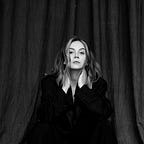10 Essential UX Design Interview Questions
We’re not here to promise you’ll ace every interview. What we can do is prepare you for your next UX design-related interview. We’ve added the top 10 most popular questions along with some tricks & tips to nail it!
#1 Tell Your UX Story
This is probably the most common question to begin the interview — this is your chance to give a bit of your background. However, avoid getting off track and start talking about your favorite school subjects, movies, or hobbies — it’s not what’s relevant here.
The interviewer wants to hear about how you entered this field and what your UX story is. Tell them about how you discovered your passion and what steps you have already taken to succeed in your UX career.
#2 Demonstrate You Understand Your Field
The question seems simple enough, but it’s about more than just textbook definitions. The interviewer wants to know if you understand what UX is about and how it’s different from other related fields.
Focus your explanation of UX design on empathy and a user-centered approach and provide some real-world examples to show you know the ropes. It’s less about sounding smart but more about your understanding of UX presented in simple yet impactful words.
#3 Be Honest
Be honest and don’t exaggerate your role in solving a challenging problem. Your experience and enthusiasm will speak volumes to your benefit.
Explain what was unique about the project and what steps you and your team took to achieve the end goal. Don’t forget to mention all techniques and methods you used, including user personas, user interviews, surveys, task analysis, or anything contributing to the final solution.
#4 Provide Real Examples
Different designers use different UX approaches. Answering the question about your design process, walk the interviewer through the steps you usually take when starting a new project.
Take one or two of your past projects as an example, and don’t hesitate to go into detail about their background, roadblocks, limits encountered, and concepts and methods you used. Other important things to mention are competitive and content audits, empathy maps, surveys, user personas, interviews, customer journeys, sketches, and prototypes. Above all, if you follow any heuristics, design standards, or best practices, bring them up.
#5 Be a Cultural Fit
This question revolves around your ability to be a team player and your willingness to adjust and be open to feedback. Ultimately, team spirit and collaboration are the most crucial concepts of product design.
When answering this question, demonstrate your enthusiasm to empathize, the ability to put yourself into other people’s shoes and understand their perspective. Provide a few real-life examples of how you found a way to communicate with developers, business analysts, or project managers.
Start improving your skills
Learn the UI/UX skills you need to succeed — regardless of your level.
#6 Show Your Style
As you know, good design is not just about achieving good visual aesthetics but also meeting your users’ needs. To tackle this question, think of products that provide a truly delightful experience overall.
Talk of your favorite apps and websites, and especially their aspects that demonstrate good UX. For example, you can mention Spotify and talk about their amazing personalized content or describe how Duolingo uses gamification to trick users into learning new languages.
#7 Be Specific
If you’ve been waiting for a question that allows you to brag a little and show off your skill set, this is it. Describe the project that helped you fully exploit your strengths, hold more than one role, or maybe dragged you out of your comfort zone.
Don’t forget to mention your contributions to the final product — it could be growing your product’s user base or improving your app’s rating on the AppStore. Did you face any setbacks? Describe how you managed to overcome them and what you learned from them.
#8 Be a Team Player
Confirming that you had disagreements in a team doesn’t put you in a bad light. On the contrary, disagreement is an essential part of the design process, and the way you handle it demonstrates your ability to face critique and accept others’ points of view.
For example, you can describe a case when a project manager’s recommendations were subjective, and you found valid arguments to prove them wrong.
#9 Show You’re Excited
This is a trick question to check whether you researched the company’s products and read their job description. Spend some time and explore the company’s website and apps, if they have any, and think of values you can bring in.
Remember that honesty is the best policy. Talk about what you genuinely like about the position — it can be the company’s culture, people, design challenges, or professional prospects.
#10 Show You’re Excited
Being a successful designer means staying in the loop of UX design trends. Before the interview, prepare a list of your inspiration sources so you can show the employer you’re keeping up with the industry. Include blogs, books, magazines, podcasts, YouTube channels, and design gurus that you follow on Twitter.
You don’t need dozens of resources — select your favorite and describe what’s remarkable about them or how they help you in your work.
